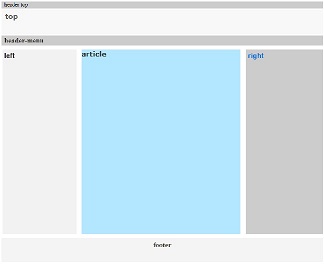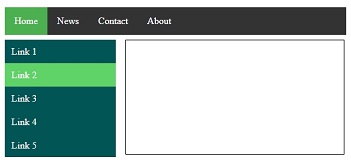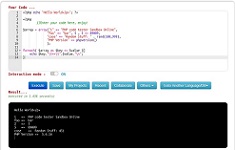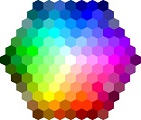Java Syntax
Java Tutorial Ľ Java Syntax
A program in java, we can directly see it as a collection of objects that communicate with each other by invoking their own methods.
Object - Objects have state and behavior.
Class - A class can be defined as a template that describes the behavior and states of an object
Methods - A method is actually a behavior of the object. A class can contain several methods. In the methods is written the logic of the application, the dice are manipulated and actions executed.
Instance - Each newly created object has a set of instance variables. The state of an object is created by the values assigned to these instance variables.
Java Sintax
The first program Let's make a program that displays the text Hi, start to learn java programming with agernic.com on display.
Example:
public class Main
††{
††††public static void main(String[] args)
††††††{
††††††System.out.println("Hi, start to learn java programming with agernic.com");
††††††}
††}
††{
††††public static void main(String[] args)
††††††{
††††††System.out.println("Hi, start to learn java programming with agernic.com");
††††††}
††}
Every line of code that runs in Java must be inside a class. In our example, we named the class Main.
When we talk about Java we have to keep in mind the following things:
Case Sensitive - java is case sensitive, which means that Hello is different from hello
Class Names - Class names always start with a capital letter. If we have more words in the class name we use camelCase.
Method names - Method names must begin with a lowercase letter. If we have several words in the name we use camelCase.
File names - File names must be identical to class names.
public static void (String args []) - the main method must always appear.
The main Method
The main() method is required and you will see it in every Java program:
Example:
public static void main(String[] args)
Any code inside the†main()
System.out.println()
Inside the main() method, we can use the println() method to print a line of text to the screen:
Example:
public static void main(String[] args) {
System.out.println("Hello World");
}
System.out.println("Hello World");
}
Note: The curly braces {} marks the beginning and the end of a block of code.
Note: Each code statement must end with a semicolon.
Note: Each code statement must end with a semicolon.
java syntax checker, cheat sheet, error on token identifier expected after this token, error on token package import expected, error on token try, and semantics, error insert, exception
Java Syntax - java
Online Editor
This tool makes it easy to create, adjust, and experiment with custom colors for the web.
HTML Templates

Magnews2 is a modern and creative free magazine and news website template that will help you kick off your online project in style.
CSS HTML Layout

Find here examples of creative and unique website layouts.
Free CSS HTML Menu

Find here examples of creative and unique website CSS HTML menu.

